GET IN TOUCH
- Please wait...
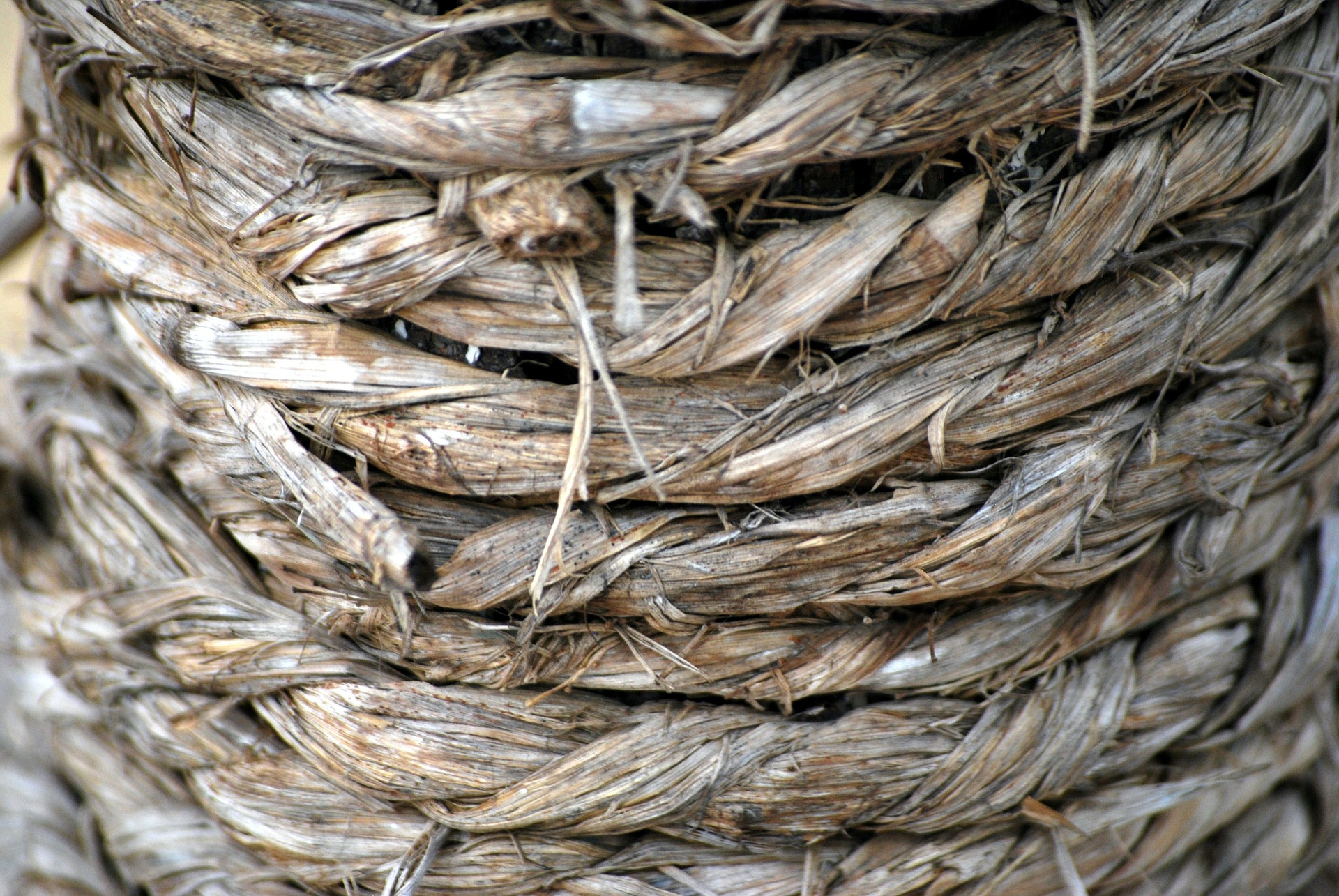
Once dubbed the “golden fiber” of Bengal [1], jute now occupies a less alluring position as a source of foreign currency. Declining export receipts, which are widely outshined by that of the RMG sector, are largely a result of a lack of innovation in the jute industry.
The dearth of dynamism in the industry has resulted in a stagnant and mundane jute export basket, which not only fails to leverage the growing demand for sustainable and affordable jute products but is also highly likely to be distressed by the recent COVID-19 pandemic.
Mitigating the Covid-19 impact on the jute industry of Bangladesh will require swift and deliberate policy action. It is imperative that any policy implementation, aimed at bolstering the jute sector, consider the current status and possible bottlenecks in different parts of the jute value chain such as backward linkages, forward linkages, etc.
Despite boasting agroecological advantages for jute production [2], trends in recent production data for Bangladesh signal a strong need for a system of incentives for jute farmers. Evaluation of production data shows consistent gains in jute production in 2014-2018, going as far as a 10% leap in 2017-18, compared to the previous year. However, production tumbled by 4% in 2018-19, falling to 8.5 million bales. [3]
Interviews with farmers during that time period revealed production cuts due to high production costs, low market prices for raw jute, and subsequently the absence of technology that could reduce production costs. [3]
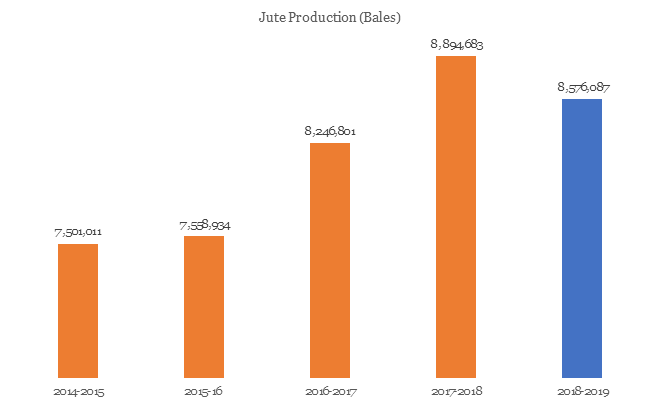
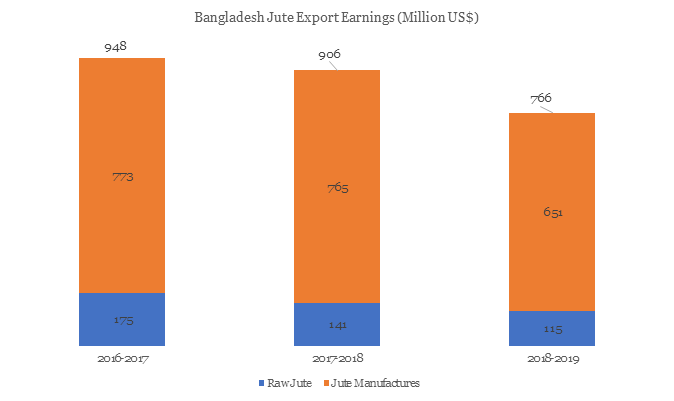
With the absence of technological innovations and a system of incentives for jute farmers, a fall in jute production will trigger a negative domino effect that will be reflected in all parts of the value chain. This situation will be especially hazardous given the current frustrations in the jute export market.
Jute export earnings have been on a downward trend since 2016, reporting the heaviest decline of 15% in 2018-19 compared to the previous year. It is interesting to note that 2018-2019 was a particularly abysmal year for the sector as negative losses were posted in both production and export earnings.
However, a downslide in export earnings cannot be solely blamed on the production pitfalls. The lack of innovation required to diversify the basket is significantly at fault. For example, export receipts from jute manufacturers accounted for 85% of total jute export receipts in 2018-2019, while those from raw jute only accounted for only 15% in the same time period [6].
The dominance of the export basket by jute goods could have been a strength if innovative goods such as Jute Diversified Products (JDPs) had been one of the key exports. Unfortunately, the real-life scenario is quite the opposite; semi-processed jute goods continue to dictate the jute goods export basket. Analyses of the end-use of and export partners for semi-processed jute goods, as well as raw jute, offer critical insight into past and potential drop(s) in export earnings.
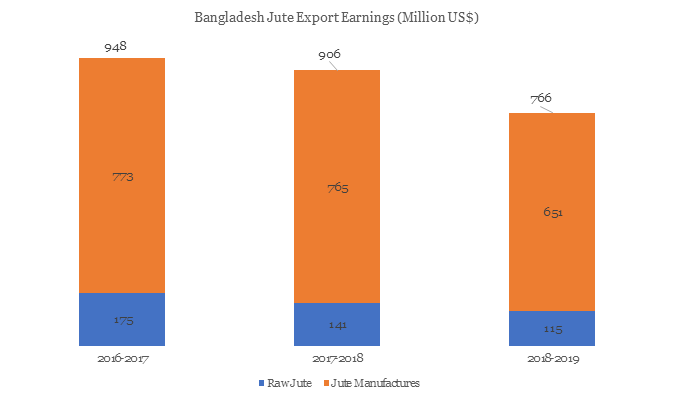
The jute goods export basket is dominated by items such as hessian, sacking, and carpet backing cloth (CBC) [7]. The stagnant product mixes of the jute goods export basket pose a serious conundrum as jute export earnings, and survival of the jute sector, is heavily dependent on semi-processed products that are exported to partner countries to be later used in the production of mostly luxury goods that are exported to the West.
Analyses of export data show the top destinations for the export of jute goods from Bangladesh are Turkey, India, China, United Arab Emirates (UAE), the Netherlands, Egypt, and Iran. [9] Countries such as Turkey, Iran, and Egypt primarily utilize the jute imports such as yarn, CBC, etc. for their carpet industry.[8] Some of the top importers of Turkey’s carpets are the USA, Saudi Arabia, Iraq, Germany, the United Kingdom, and the UAE. [9]
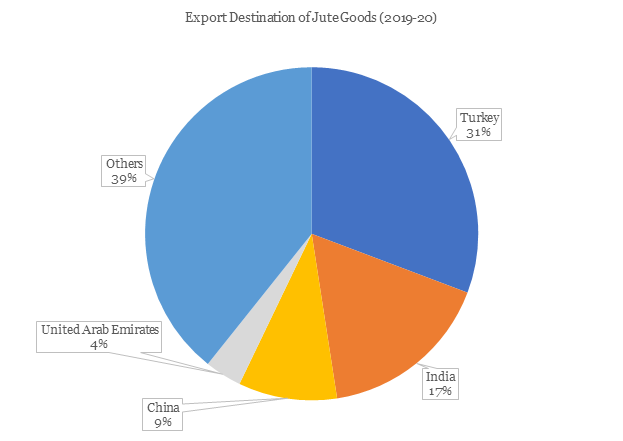
Raw jute, which accounts for less than 20% of jute export earnings, is exported to nearby countries such as India, China, Pakistan, etc., and processed into other jute products. In the case of raw jute, the local industries within top export partners pose serious competition for Bangladeshi exports.
India is the largest producer of jute trailed by China. [11] Bangladesh is, therefore, likely to face stiff competition from local Indian and Chinese producers of raw jute unless there are cost-cutting technological innovations on the production end.
Similar to jute goods exports, raw jute exports to India and China are developed into finished goods and sold to countries such as the United States, Netherlands, United Kingdom, Germany, etc. [9]
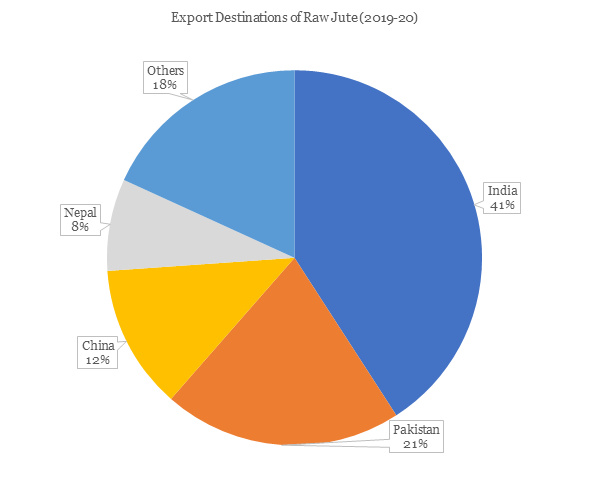
Export data of both raw jute and jute goods reveal a high dependency on the exports of finished jute products, especially luxury products such as carpets, from export partners to the developed countries in the West.
In the event of a recession, triggered by the COVID-19 pandemic, the demand for such luxury items will significantly decline, and the export of jute goods and raw jute in Bangladesh will face a downfall. This will be analogous to the decline in jute exports in early 2018 and during the financial crisis of 2008-2019.
An economic slowdown in Europe [12] led to a decline in jute exports and export earnings in 2018 since European countries are some of the top consumers of jute items that are produced using jute from Bangladesh. Similarly, exports of jute goods fell by 15.4% after the global financial crisis in 2008-2009.
A drop in the export of jute goods in the current crisis will have catastrophic short-term and long-term impacts on the industry. In the short run, a fall in the export of jute goods would only worsen the woes of mass layoffs and a decline in export earnings.
The consequences, in the long run, are far more severe; a decline in demand for jute products will continue to drive the flow of labor out of the industry. Farmers, for example, will not be incentivized to grow jute due to low demand, and consequently low prices, of raw jute. Workers willing to specialize in the production and design of jute products will be heavily disincentivized from entering or remaining in the industry. The lack of a skilled workforce will continue to hamper Bangladesh’s efforts in leveraging the growing popularity of jute and reviving the heritage of the once-cash crop of Bengal.
The prevention of the effects of a recession will require rigorous and prompt policy implementations. Policy implementations should target the different components of the jute value chain, starting with production.
The introduction of advanced and cost-cutting production technologies could significantly reduce costs for farmers, raising profits and incentivizing the expansion of jute production. Technological innovation in jute production will be a multi-dimensional process-one that will require both investments in technology and robust research support from scientists, agriculturists, and educational institutes.
The advances from technological innovation must be compounded by training jute farmers in methods of effective cultivation. Applications of such strategies will allow Bangladesh to harness its eco-agricultural comparative advantages in jute production.
The export basket should also be a central area of policy reform. Bangladesh could diversify the export basket to have a jute export mix like that of China.
China, which is one of the top importers of raw jute from Bangladesh, boasts an export basket dominated by sacks and bags. China’s jute export basket not only leverages the global demand for sustainability but will also weather the effects of an economic downturn better, given the necessity and affordability of dominant items in the basket.
Instead of exporting the raw jute to China, Bangladesh could easily utilize it in the production of items such as JDPs. JDPs such as shopping bags, storage items, etc. are cheaper to purchase and transport.
Above all else, unlike the demand for luxury items such as carpets, the demand for JDPs is less likely to be adversely affected during a recession, given the necessity of many of these items in households. It will be pertinent, therefore, to integrate products such as JDPs into the export basket in order to leverage the growing demand for sustainability and shield the jute industry from the calamities of the pandemic-triggered recession.
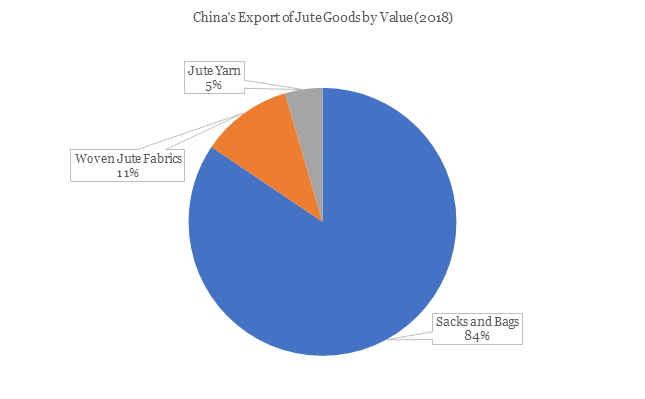
Diversification of the export basket must also be complemented by innovation and research in the processing sector of the jute value chain. Countless JDPs are manufactured from a combination of jute and other materials, e.g., cotton, resin, etc.
Universities and agricultural researchers should also be involved in the processing segment for the continuous innovation of jute-oriented compounds that can be used in the manufacture of JDPs. [13]
SMEs that specialize in producing JDPs will play a critical role in revamping the jute industry. Policy implementations, such as subsidized training programs for current and potential workers, expansion of credit facilities to SMEs specializing in JDP production, etc., could spur the production of JDPs, diversifying the jute export basket and mitigating a potential decline in jute export earnings. This strategy will have the added advantage of providing employment to marginalized groups, e.g., rural female artisans, who are likely to be most adversely affected during an economic downturn.
Significant marketing efforts will be required to make Bangladesh’s jute products mainstream, locally and globally. The involvement of local and global fashion brands will be critical in such efforts. Fashion- and lifestyle-oriented JDPs must be given priority at global events such as fashion shows, international trade fairs, and trade fairs conducted by Bangladesh Embassies abroad.
Marketing campaigns, targeted to increase global and local JDP consumption, will require strong partnerships between multiple players; local fashion and lifestyle brands, SMEs, relevant public stakeholders, and the diplomatic community.
The jute industry stands at a crossroads in the face of the pandemic-induced economic downfall. Without the presence of any swift and corrective strategy, export earnings from the industry’s dominant export products will tumble, exacerbating the growing economic distress.
On the other hand, policymakers may be able to turn this situation around with rapid diversification of the export basket and strong incentives for innovation in the jute industry. Semi-processed jute goods such as CBC, which continue to dictate the export basket, must be significantly supplanted by JDPs.
The goal can be obtained with strategic reforms in both the backward and forward linkages of the jute industry’s value chain. This best-case scenario comes with multiple and much-needed advantages-a boost in export earnings to alleviate the losses from other sectors such as RMG, renewed employment opportunities for at-risk groups, the revival of the glory of the “golden fiber” and the chance for Bangladesh to build a reputation as a leader in sustainable production.
Authors: Farah Hamud Khan, Senior Business Consultant & Project Manager, LightCastle Partners
The LightCastle team has been analyzing the macro and industry level picture and possible impacts wrought about by the Covid-19 crisis. Over the following days, we’ll be covering the major sectors shedding light on the possible short and long-term ramifications of the global pandemic. Read all the articles in the series.
Our experts can help you solve your unique challenges
Stay up-to-date with our Thought Leadership and Insights